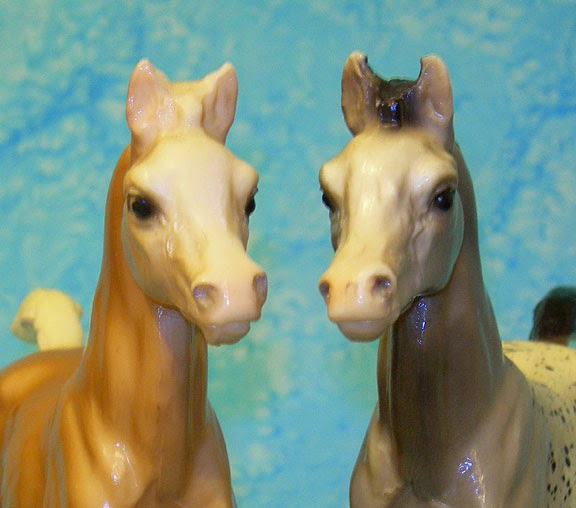(I am also trying to get one particularly aggravating quilt project done by then, so again, no promises made.)
One interesting aspect of collection buying is that collections tend to be time capsules: most of pieces in a given collection will have been purchased within a narrow span of time. The more pieces you have, the more accurate the dating can be.
It’s also one of the lesser-documented eras: aside from some mail-order company sheets, the ca. 1960 Dealer Catalog and 1961 Inserts, and some XMAS catalogs pages, there’s not a lot to go on. Price lists are in short supply, so release dates from that era are difficult to pinpoint. Most of what we know - or think we know - is built on a fragile web of references.
This is why things like the existence of frequent mold variations on the Family Arabian Foal can be so invaluable: it’s one of the few ways we supplement the slender paper trail.
This collection had several Family Arabians in it, of every color. Alas, there were no belly-stamped Foals, but some curled-eartip ones. Except for this Gloss Palomino:
Exactly when? That, we still can’t pinpoint. Just a probable sequence.
Anyway, the fact that virtually all of the other models in this collection are datable to this time period also suggests that this Foal - and his entire family, who came with - are likely to be extremely early releases of the Palomino Family Arabians, if not among the earliest.
They were in very, very nice condition compared to the other Family Arabians in the group, which means they were either highly prized, lightly played with, or both. They are so nice I haven't decided yet if they are staying, or going.
That the Palominos could have been highly prized should not be a surprise. Let’s not forget that at the time they were likely purchased, the Palominos were a shiny new novelty. No one had any idea they’d eventually become common to the point of ubiquity.




1 comment:
I have an alabaster foal with a belly stamp and I believe had the curly ear tips. The very tips of the ears are gone but I still believe they are/were curly. Does the belly stamp help date the foal as an early one?
Post a Comment